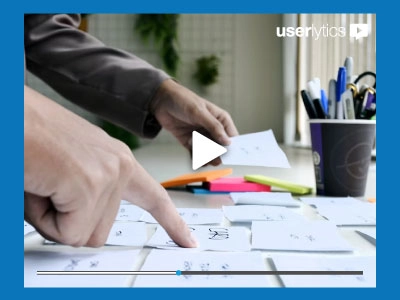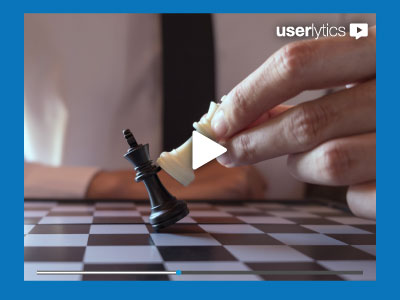Unlocking User Insights: Mastering Card Sorting and Tree Testing with Userlytics
Are you ready to dive deep into the world of user research and uncover valuable insights? Join us for an enlightening webinar, “Unlocking User Insights: Mastering Card Sorting and Tree Testing,” hosted by Userlytics. In this webinar, we’ll guide you through the essential techniques and best practices for conducting effective card sorting and tree testing studies.
Whether you’re a UX researcher, designer, information architect, or anyone involved in user research, this webinar will equip you with the knowledge and skills needed to leverage card sorting and tree testing to gain valuable user insights.

Benefits and takeaways
- Gain a deep understanding of the principles and benefits of card sorting and tree testing tools in user research.
- Learn proven strategies for designing card sorting studies and structuring information architecture using tree testing.
- Discover techniques to identify and validate the most intuitive and user-friendly information structures.
- Explore best practices for selecting and recruiting participants for card sorting and tree testing studies.
- Acquire practical tips for analyzing and interpreting the data collected from card sorting and tree testing sessions.
- Uncover the power of card sorting and tree testing in improving navigation, information findability, and user experience.

Who is it for?
This webinar is tailored for UX researchers, designers, information architects, and anyone involved in user research seeking to enhance their understanding of card sorting and tree testing. Whether you’re a seasoned professional or just starting your journey, this webinar will provide valuable insights to optimize your user research efforts.
In particular:
- User Experience Researchers
- B2B SaaS Vendors
- Marketing Executives
- User Experience Designers
- Product Managers
- User Experience Writers
WHAT WILL YOU LEARN?
- Understand the fundamentals of card sorting and tree testing and how they complement each other in user research.
- Learn how to plan and design effective card sorting studies, including open, closed, and hybrid approaches.
- Discover techniques for creating well-structured and intuitive information architectures using tree testing.
- Gain insights into selecting appropriate participants for the studies.
These tools offer specific features and functionalities for conducting csorting and t testing studies. Here’s a general overview of cardsorting and tree tmethodologies: Card Sorting: Card sis a technique used to understand how users categorize and organize information. Participants are presented with a set of cards, each representing a piece of content or information. They are then asked to group the cards into categories that make sense to them. There are two main types of card sorting: open card sorting, where participants create their own categories, and closed card sorting, where participants sort cards into predefined categories. There are two main types of card sorting: open card sorting, where participants create their own categories, and closed card sorting, where participants sort cards into predefined categories. Card sorting and tree testing
Tree Testing: Tree testing, also known as reverse card sor information architecture t, focuses on evaluating the organization and structure of a website’s navigation or information hierarchy. Participants are presented with a text-based representation of the website’s structure (without visual design elements) and are given specific tasks to find information within the structure. The goal is to identify potential issues or inefficiencies in the website’s navigation and information architecture. When conducting csorting or 3testing studies, it’s important to consider factors such as selecting appropriate participants, defining clear tasks or instructions, analyzing the results, and deriving insights to inform design decisions. Remember to check the Userlytics platform for any updates or new features they may have introduced since my knowledge cutoff. Additionally, keep an eye on other dedicated tools that specialize in card sorting and tree testing for a more tailored and focused research experience.
Userlytics

Since 2009 we have been helping enterprises, governmental organizations, non-profits, agencies and startups optimize their user experience, or UX. With our state-of-the-art platform, massive global participant panel and unlimited accounts/seats for democratizing user research, we are the best all-in-one solution for remote user testing.
Schedule a Free Demo



